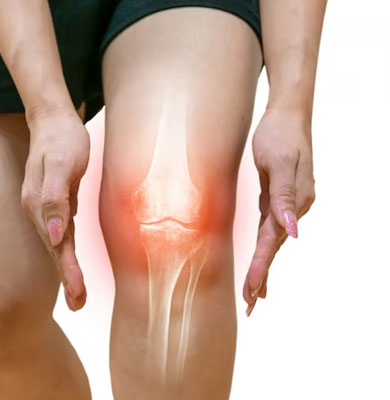What is Osteoporosis and How to Keep Your Bones Healthy

Osteoporosis is a disease that causes our bones to deteriorate and become more fragile (meaning that they are more likely to break or fracture). Bone strength is critical for overall health and well-being. They aid in movement, protect our internal organs, and store essential minerals such as calcium. They also keep us mobile and independent by preventing fractures and chronic pain, both of which can negatively impact our quality of life.
How do we get strong bones?
Throughout our lives, our bones are constantly remodeled, a process known as bone turnover. To keep bones healthy and strong, the cells that remove old bone (osteoclasts) and those that make new bone (osteoblasts) collaborate to maintain a healthy bone balance.
Minerals such as calcium, phosphorus, and magnesium are the building blocks of new bones, and Vitamin D is a key vitamin that helps our bodies absorb and use these minerals. Adequate intake of these nutrients is required for strong bones.
Because bones grow rapidly during childhood and adolescence, it is especially important to ensure that children and teenagers get enough calcium and Vitamin D for optimal bone growth and development.
What makes bones weak?

A variety of lifestyle factors can weaken our bones and increase our risk of osteoporosis. Lack of physical activity and weight bearing exercise, for example, as well as smoking and excessive alcohol consumption, can all have a negative impact on bone health.
Hormonal changes in women can also have a significant impact on bone health. For example, after menopause, when the ovaries stop producing estrogen, women’s bone density rapidly declines, increasing their risk of osteoporosis and fractures.
Furthermore, certain medical conditions, such as anorexia, inflammatory bowel disease, hyperthyroidism, or overuse of glucocorticoid medications, can have a negative impact on bone health.
How can we help our bones?
There are several steps that people can take to help keep their bones strong and healthy. Regular exercise, especially weight-bearing exercises like walking, running, or dancing, can help build and maintain strong bones.
Eating a diet rich in calcium and Vitamin D is also important for bone health. Foods like dairy products, green leafy vegetables, and fatty fish are good sources of calcium, while Vitamin D can be found in foods such as egg yolks, fortified foods or supplements. Avoiding smoking and limiting alcohol intake can also help protect bones.
Bone density scans, such as a DEXA scan, can be used to assess bone health and detect osteoporosis. Based on the results, a doctor may recommend medication or other treatments to prevent or slow down bone loss (additionally, a nutritionist can also help develop an appropriate diet plan which can support bone health).
In cases of severe osteoporosis or fractures, physical therapy and occupational therapy can help improve mobility and prevent further injuries.
Testing for Osteoporosis
The most common and reliable test for osteoporosis is a bone density test, typically called a DEXA scan. This test uses X-rays to measure the density of bones in the spine, hip and sometimes the forearm. The test is quick, non-invasive, and painless, and it provides a measure of bone density called a T-score.
A T-score of -1.0 or above is considered normal, between -1.0 and -2.5 is considered osteopenia (low bone density) and below -2.5 is considered osteoporosis.
Other tests like Ultrasound of the heel, Single-Energy X-ray Absorptiometry (SXA), and quantitative computed tomography (QCT) are also used, but DEXA scan is the most common.
If a person has risk factors or has a family history of osteoporosis, or if they have broken a bone easily in the past, they should talk to their doctor about getting a bone density test.
In Conclusion
Osteoporosis is a serious condition that weakens bones and increases their susceptibility to fracture. Regular exercise, a healthy diet, and avoiding smoking and excessive alcohol consumption can all help people keep their bones strong.
There are tests, treatments, and therapies to help manage osteoporosis, but it’s critical to catch it early with regular checkups, especially if you have a family history or other risk factors.
Understanding the importance of healthy bones and how to care for them is critical. Consult your doctor if you have any concerns about your bone health.


